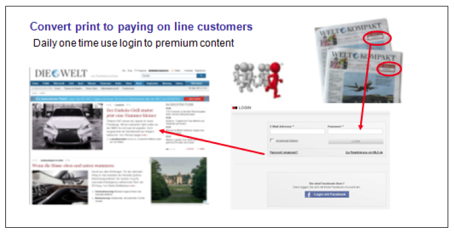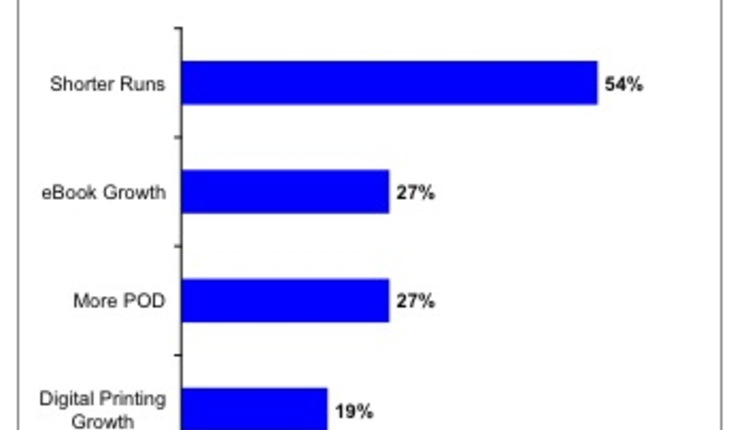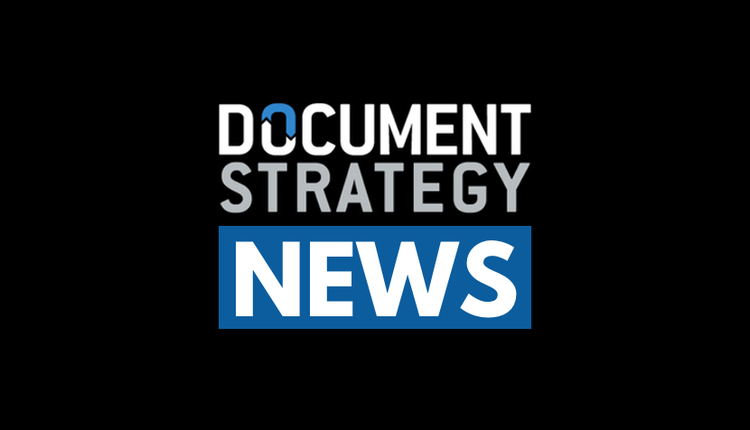
Newspapers and magazines are important publishing markets where, until quite recently, digital printing has mostly played a marginal supporting role. Yet the advent of high-speed inkjet printing, as well as new publishing models enabled by the Internet, has opened the door to a higher degree of participation for digital printing. Although newspapers and magazines are similar in many ways, digital printing is developing quite differently in these markets.
In recent years, newspaper circulation and advertising revenue has rapidly declined in Europe, North America and Australia/New Zealand. Yet, these regions account for less than one quarter of the world’s population. In the rest of the world, newspaper circulation is increasing. As we have seen in other instances, as a print market contracts, it creates more opportunities for digital printing. As run lengths decline and digital printing technology evolves, more newspapers will be produced on digital equipment.
Opportunities in the newspaper market include short runs of international newspapers printed in a distributed manner closer to the point of consumption; customized versions based on geographic, language and other demographic criteria; inline inkjet personalization to tap synergies between print and electronic media; and numerous marketing, advertising and informational opportunities for businesses.

Figure 1: Cross-media newspaper application (Source: Axel Springer, 2013)
Magazines have proven staying power as brand builders, and circulation has stabilized since the recession; even so, publishers are scrambling to replace advertising dollars, which have fled to online and mobile destinations. Magazines are a potentially more lucrative market than newspapers for digital print providers because they are color intensive; they also offer numerous opportunities for cross-media applications. Magazine readers are also avid online users and shoppers. The use of QR codes and other cross-media techniques in magazine advertising is on the rise. The challenge for print providers, as with other cross-media applications, is not in putting marks on paper but in creating insight into the data gathered from those marks. As more advertising dollars flee to online and mobile destinations, print providers must be willing and able to bridge the products they print to online and mobile channels in order to bring some of the advertising revenue back.
The quality and substrate flexibility of inkjet has improved significantly in recent years, but cost, quality and performance on light weight coated stocks are still issues for producing full issues of magazines with inkjet. Magazines' applications, which favor inkjet, include hybrid printing, cover wraps and inserts where inkjet is beginning to play a role. Toner-based digital equipment is also playing a role in the production of high-quality personalized and self-published magazines.

Figure 2: Personalized cosmetics ad appearing in Harper’s Bazaar (Source: SCI)
We expect daily newspaper circulation to decline by about one percent to two percent annually from 2013 to 2018, but forecast that A4 equivalent newspaper pages produced or overprinted using digital equipment to grow annually at about 23%. We project the volume of printed magazines to decline by about two percent annually from 2013 through 2018, but the volume of pages produced on digital equipment to grow at about 18% per year through 2018.
Founded in 1990 and headquartered in Charlottesville, Virginia, INTERQUEST is a market and technology research and consulting firm in the field of digital printing and publishing. Its most recent study of digital printing in publication markets is "Digital Printing Opportunities in Newspaper and Magazines: Market Analysis & Forecast (2013-2018)." For more information contact INTERQUEST at 434-979-9945 or visit www.inter-quest.com.























